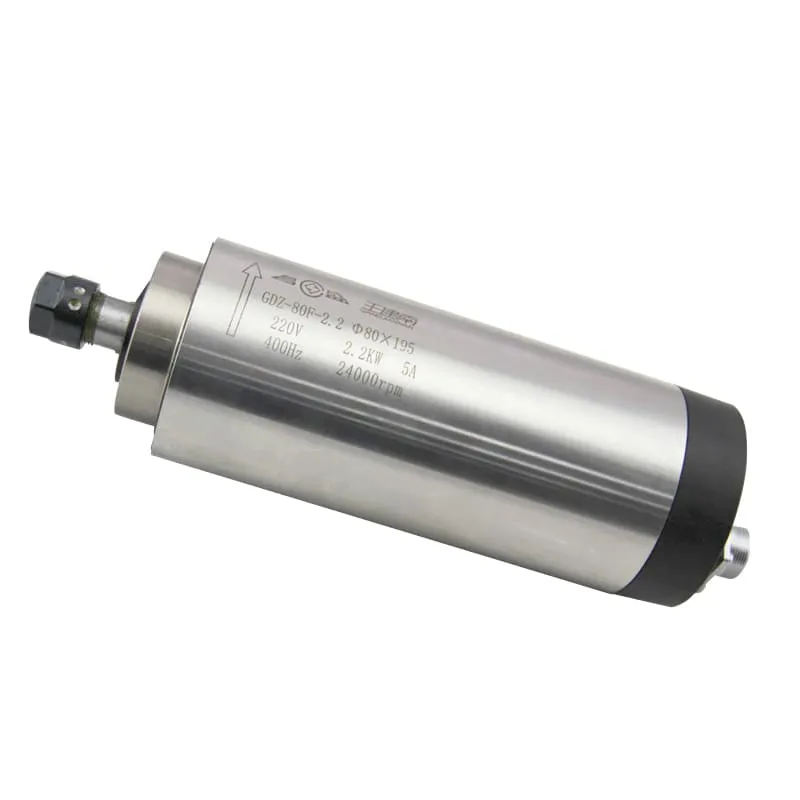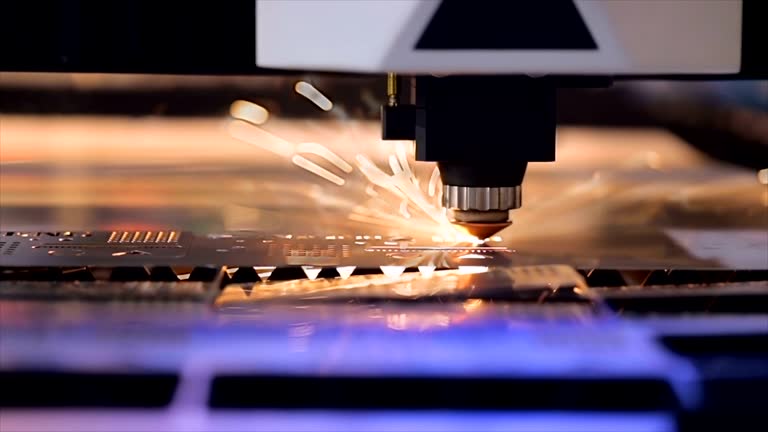How Accurate Are CNC Machines?
CNC (Computer Numerical Control) machines are renowned for their precision and accuracy in manufacturing. However, the exact level of accuracy can vary depending on several factors. This comprehensive guide will explore the accuracy of CNC machines, factors affecting it, and how it compares across different types of CNC equipment.
Understanding CNC Machine Accuracy
Accuracy in CNC machining refers to how closely the finished part matches the intended design. It’s typically measured in terms of tolerances, which specify the acceptable range of deviation from the nominal dimensions.

A typical CNC machine setup
Typical Accuracy Ranges
The accuracy of CNC machines can vary widely, but here are some general ranges:
- High-Precision CNC Machines: ±0.0001″ to ±0.0005″ (0.0025mm to 0.0127mm)
- Standard CNC Mills and Lathes: ±0.001″ to ±0.005″ (0.0254mm to 0.127mm)
- CNC Routers: ±0.002″ to ±0.01″ (0.0508mm to 0.254mm)
- Large-Scale CNC Machines: ±0.005″ to ±0.03″ (0.127mm to 0.762mm)
Factors Affecting CNC Machine Accuracy
Several factors contribute to the overall accuracy of a CNC machine:
1. Machine Design and Construction
The fundamental design and build quality of the CNC machine play a crucial role in its accuracy:
- Rigidity: A rigid frame and components minimize deflection under cutting forces.
- Thermal Stability: Materials and designs that resist thermal expansion improve consistency.
- Precision Components: High-quality ball screws, linear guides, and bearings enhance accuracy.
2. Environmental Factors
The environment in which the CNC machine operates can significantly impact its accuracy:
- Temperature Control: Fluctuations in temperature can cause thermal expansion and contraction.
- Vibration: External vibrations can affect cutting precision.
- Humidity: In some materials, humidity changes can affect dimensions.
3. Tooling and Workholding
The tools and workholding devices used also contribute to overall accuracy:
- Tool Quality: High-quality, well-maintained cutting tools produce more accurate results.
- Tool Deflection: Minimizing tool deflection, especially in long or thin tools, is crucial.
- Workpiece Clamping: Proper and consistent workholding prevents movement during machining.
4. CNC Controller and Software
The control system’s capabilities and configuration are vital for accuracy:
- Controller Resolution: Higher resolution allows for more precise movements.
- Software Compensation: Features like thermal compensation can improve accuracy.
- Interpolation Algorithms: Advanced algorithms can enhance contour accuracy.
5. Machine Calibration and Maintenance
Regular calibration and maintenance are essential for maintaining accuracy:
- Geometric Calibration: Ensures all axes are square and true.
- Backlash Compensation: Accounts for mechanical play in drive systems.
- Periodic Checks: Regular accuracy checks can catch and correct drift over time.
Accuracy in Different CNC Machine Types
Different types of CNC machines have varying accuracy capabilities:
CNC Mills
CNC milling machines, especially high-end models, can achieve impressive accuracy:
- High-End Mills: Can achieve tolerances of ±0.0001″ (0.0025mm) or better.
- Standard Mills: Typically work within ±0.001″ to ±0.003″ (0.0254mm to 0.0762mm).
Factors like the 2.2KW ER20 Air-Cooled Spindle can contribute to the overall accuracy of a CNC mill.
CNC Lathes
CNC lathes are known for their ability to produce precise cylindrical parts:
- Precision Lathes: Can achieve tolerances of ±0.0002″ (0.005mm) or better.
- Standard Lathes: Typically work within ±0.001″ to ±0.005″ (0.0254mm to 0.127mm).
CNC Routers
CNC routers, often used for woodworking and soft materials, have varying accuracy levels:
- High-Quality Routers: Can achieve tolerances of ±0.002″ to ±0.005″ (0.0508mm to 0.127mm).
- Standard Routers: May have tolerances of ±0.005″ to ±0.01″ (0.127mm to 0.254mm).
Large-Scale CNC Machines
Larger CNC machines, like those used in aerospace or automotive industries, face unique challenges:
- Typical tolerances range from ±0.005″ to ±0.03″ (0.127mm to 0.762mm).
- Advanced compensation techniques are often employed to maintain accuracy over large work areas.
Measuring and Verifying CNC Machine Accuracy
Accurate measurement is crucial for verifying and maintaining CNC machine precision:
1. Laser Interferometers
- Provide highly accurate linear measurements.
- Can measure straightness, flatness, and angular errors.
2. Ball Bar Tests
- Assess the machine’s dynamic accuracy and circularity.
- Help identify issues with servo tuning and geometric accuracy.
3. Touch Probes
- Allow for in-process measurement and verification.
- Can be used for workpiece alignment and tool setting.
4. Coordinate Measuring Machines (CMM)
- Provide precise post-machining verification of part accuracy.
- Can generate detailed reports on part conformity.
Improving CNC Machine Accuracy
Several strategies can be employed to enhance CNC machine accuracy:
1. Environmental Control
- Implement temperature control in the machining area.
- Use vibration isolation techniques for sensitive operations.
2. Advanced Control Techniques
- Utilize thermal compensation software.
- Implement dynamic error compensation.
3. Regular Calibration
- Perform periodic geometric and volumetric calibration.
- Use laser calibration systems for high-precision adjustments.
4. Tooling Optimization
- Use high-quality, balanced tooling.
- Implement tool wear compensation techniques.
5. Workholding Improvements
- Use precision workholding devices.
- Ensure consistent clamping pressure and methods.
CNC Accuracy vs. Precision vs. Resolution
Understanding the distinction between these terms is crucial:
- Accuracy: How close a measurement is to the true value.
- Precision: The repeatability of measurements.
- Resolution: The smallest increment of movement or measurement.
A CNC machine can have high resolution and precision but still lack accuracy if not properly calibrated.
The Role of Accuracy in Different Industries
The required accuracy of CNC machines varies across industries:
Aerospace
- Demands extremely high accuracy for critical components.
- May require tolerances as tight as ±0.0001″ (0.0025mm) for some parts.
Automotive
- Requires good accuracy for engine components and body panels.
- Typical tolerances range from ±0.001″ to ±0.005″ (0.0254mm to 0.127mm).
Medical Devices
- Needs high accuracy for implants and surgical instruments.
- Often requires tolerances of ±0.0005″ (0.0127mm) or better.
General Manufacturing
- Accuracy requirements vary widely based on the specific application.
- May range from ±0.005″ to ±0.03″ (0.127mm to 0.762mm).
Future Trends in CNC Machine Accuracy
The pursuit of greater accuracy in CNC machining continues:
- AI and Machine Learning: For predictive maintenance and error compensation.
- Advanced Sensors: To provide real-time feedback on machine performance.
- Hybrid Manufacturing: Combining additive and subtractive processes for enhanced accuracy.
- Nanotechnology: Pushing the boundaries of machining precision to the nanoscale.
FAQ
1. How does CNC machine accuracy compare to manual machining?
CNC machines generally offer higher accuracy and consistency compared to manual machining, especially for complex parts or large production runs.
2. Can a CNC machine maintain the same accuracy throughout a long production run?
While CNC machines are designed for consistency, factors like tool wear and thermal expansion can affect accuracy over long runs. Regular checks and adjustments may be necessary.
3. How often should a CNC machine be calibrated?
The frequency of calibration depends on usage, but many shops calibrate their machines monthly or quarterly. Some high-precision operations may require daily checks.
4. What’s the most accurate type of CNC machine?
Precision grinding machines and jig borers are among the most accurate, capable of tolerances in the micron range. However, for most applications, standard CNC mills and lathes offer sufficient accuracy.
5. How does the accuracy of a CNC wood router compare to metal-cutting CNC machines?
CNC wood routers are generally less accurate than metal-cutting machines due to the nature of the material and the typical construction of wood routers. However, high-end wood routers can still achieve impressive accuracy for woodworking applications.
6. Can software compensation improve CNC machine accuracy?
Yes, many modern CNC controllers offer features like thermal compensation and tool center point management, which can improve accuracy by compensating for known sources of error.
Conclusion
The accuracy of CNC machines is a crucial factor in modern manufacturing, enabling the production of complex parts with high precision and consistency. While the exact level of accuracy can vary widely depending on the type of machine, its configuration, and the specific application, CNC technology generally offers superior accuracy compared to manual machining methods.
Understanding the factors that influence CNC machine accuracy is essential for manufacturers and machinists alike. From the initial machine design and construction to ongoing maintenance and environmental control, numerous elements contribute to the final accuracy of machined parts. By carefully managing these factors, it’s possible to achieve extremely tight tolerances and high-quality outputs.
As CNC technology continues to advance, we can expect even greater levels of accuracy and precision in machining operations. Innovations in machine design, control systems, and metrology are pushing the boundaries of what’s possible in terms of manufacturing precision. This ongoing evolution opens up new possibilities in industries such as aerospace, medical device manufacturing, and other fields where extreme accuracy is paramount.
However, it’s important to remember that achieving and maintaining high accuracy with CNC machines is not just about the equipment itself. It requires skilled operators, well-maintained tools, optimized programming, and a controlled environment. The human element remains critical in leveraging the full potential of CNC technology.
Ultimately, the accuracy of CNC machines is a key factor in their widespread adoption across various industries. Whether producing precision aerospace components or intricate medical devices, CNC technology offers the potential for extremely accurate manufacturing when properly implemented and maintained. As the technology continues to evolve, we can look forward to even greater possibilities in precision manufacturing, pushing the boundaries of what’s possible in the world of machining.

